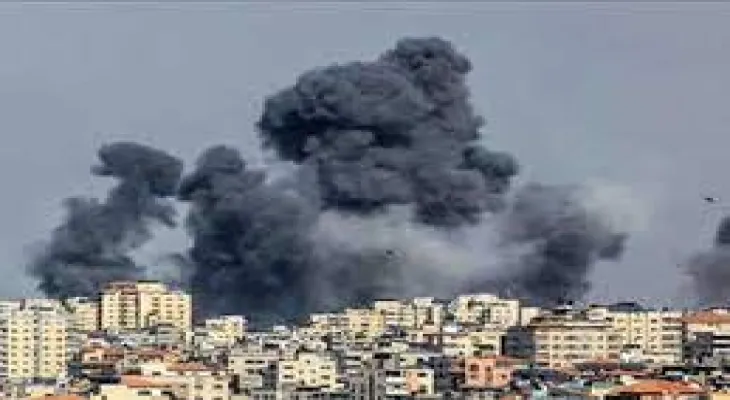Search here
Newspaper
Search here

Arab Canada News
News

Published: February 3, 2024
Hamas began to reappear in the areas from which Israel withdrew most of its forces a month ago, deploying police officers and partially paying salaries to some civil service employees in Gaza City in recent days, according to statements from four residents and a senior movement official on Saturday.
The signs indicating Hamas's return to Gaza's largest city demonstrate the group's resilience despite the deadly air and ground campaign Israel has launched over the past four months. Israel said it is determined to crush Hamas and prevent it from returning to power in Gaza, the enclave it has ruled since 2007.
In recent days, Israeli forces renewed their strikes in the western and northwestern parts of Gaza City, including areas where some salaries were reportedly distributed.
Four Gaza City residents told The Associated Press that in recent days, police officers wearing uniforms and civilian clothes were deployed near the police headquarters and other government offices, including near Al-Shifa Hospital, the largest in the enclave. The residents said they saw the return of civil service employees and subsequent Israeli air raids near the temporary offices.
The return of the police represents an attempt to restore order in the devastated city after Israel withdrew a significant number of its forces from northern Gaza last month, said a Hamas official to The Associated Press, speaking on condition of anonymity because he was not authorized to speak to the media.
The official said group leaders gave instructions to reimpose order in parts of the north where Israeli forces withdrew, including helping to prevent looting of stores and homes left by residents who responded to repeated Israeli evacuation orders and moved to the southern half of the city.
During the Israeli ground assault, many homes and buildings were left half-standing or turned into piles of scrap, rubble, and dust.
Saeed Abdelbar, a Gaza City resident, said his cousin received money from a temporary Hamas office near the hospital that was established to distribute $200 to government employees, including police officers and municipal workers.
Since taking control of Gaza nearly 17 years ago, Hamas has continued to operate a government bureaucracy employing tens of thousands of civil servants, including teachers, traffic police, and civil police working separately from the movement’s secret military wing.
The partial $200 salaries to at least some government employees indicate that Israel has not delivered a knockout blow to Hamas, even as it claims to have killed more than 9,000 Hamas fighters.
Ahmed Abu Hadrous, a Gaza City resident, said Israeli warplanes bombed the area where the temporary office is located several times earlier this week, including Saturday morning.
These strikes come roughly a month after Israeli military leaders said they dismantled Hamas's brigade command structure in the north, but individual fighters continue to carry out guerrilla-style attacks.
Meanwhile, fighting continued in southern Gaza on Saturday.
The organization said at least 11 people were injured when the Israeli army fired smoke bombs at displaced people sheltering at the Palestinian Red Crescent headquarters in Khan Younis city in the south. It did not provide further details, and the Israeli army had no immediate comment.
The organization said the injuries came after the Israeli army imposed a 12-day siege on Red Crescent facilities.
The charity also documented the killing of 43 people, including three staff members, inside buildings by Israeli fire during those 12 days. It added that 153 others were injured.
At least 17 people, including women and children, were killed in two separate airstrikes overnight in Rafah city at the far south of the Gaza Strip, on the border with Egypt, according to the hospital morgue where the bodies were transferred.
The first strike hit a residential building east of Rafah, killing at least 13 people from the Hijazi family. Hospital officials said among the dead were four women and three children. The second strike hit a house in the Al-Jneina area of Rafah, killing at least two men and two women from the Homs family.
A relative, Ahmed Hijazi, said, "There are still two children under the rubble, and we know nothing about them."
The 17 bodies were transferred to Abu Yusuf Al-Najjar Hospital, the main health facility in Rafah, and were seen by an Associated Press journalist.
The Gaza Ministry of Health said on Saturday that 107 people were killed in the past 24 hours, bringing the total war death toll to 27,238. More than 66,000 people were injured.
More than half of Gaza’s 2.3 million residents have fled to Rafah and surrounding areas. A United Nations official said on Friday that Rafah had become “a pressure cooker of desperation.”
Earlier this week, Israel’s defense minister warned that Israel might expand its fighting to include Rafah after focusing in recent weeks on Khan Younis, the largest city in southern Gaza. While this statement concerned aid officials and international diplomats, Israel may risk significantly disrupting strategic relations with the United States and Egypt if it sends troops into Rafah.
International mediators continue to work on bridging the wide gaps between Israel and Hamas over the proposed ceasefire agreement presented this week, after about four months since Hamas and other militants took about 250 hostages during their deadly October 7 attack on southern Israel that ignited the war.
Hamas continues to hold dozens of prisoners after releasing more than 100 during a week-long truce in November, who were freed in exchange for 240 Palestinian prisoners.
The conflict has devastated vast areas of the small coastal enclave, displaced 85% of its population, and pushed a quarter of residents toward famine.
Comments